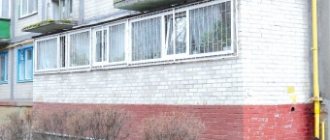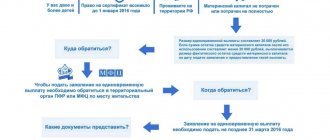We resolve legal and financial issues
In connection with numerous appeals to the administration of the municipal municipality "Gusevsky Municipal District" through the Internet reception, regarding the issue of payment for electricity for common areas in apartment buildings, the department of housing and communal services, fuel and energy complex, road facilities, transport and gas supply reports the following.
Currently, housing and communal services are being reformed in Russia. As part of this process, service organizations introduce changes in relationships with their clients - individuals living in apartment buildings. In accordance with Decree of the Government of the Russian Federation dated May 23, 2006 No. 307, as general building accounting is organized in apartment buildings, OJSC Management Company will make charges for electrical energy consumed not only in the apartments, but also for the general building needs of the apartment building. In connection with this, consumers have numerous questions about charging for electricity in public areas. I bring to your attention answers to the most pressing topics.
What does "Electricity MOP" mean? MOP electricity is electrical energy that is used by residents of an apartment building for “general house needs.” This concept includes lighting of staircases, basements and all kinds of auxiliary premises of an apartment building, booster pumps and other indoor equipment, which is individual for each house. Previously, electricity consumption for general house needs was included in the article “Maintenance of housing stock” and was calculated in accordance with standards.
Now, in accordance with the Decree of the Government of the Russian Federation dated 23.05. 2006 No. 307, the cost of electrical energy spent on general house needs is highlighted in the receipt as a separate line. Thus, with the introduction of a new form of payment, expenses for general house needs are distributed and accrued individually to each owner or tenant of the residential premises of an apartment building.
How is MOP electricity calculated? According to the Decree of the Government of the Russian Federation dated May 23, 2006 No. 307, there is a clear model for the distribution of electricity by MOP. First of all, the amount of all electricity entering the house is recorded by a common house meter. These readings are taken monthly by representatives of the service organization and transmitted to the energy sales company. Using the readings taken, the actual consumption of electrical energy is determined using a common house meter. From the resulting consumption, the entire consumption of individual electricity meters is excluded, as well as, if there are in an apartment building, the consumption of legal entities that can be connected to general building networks, the remaining volume, in accordance with the rules for the provision of utility services to citizens (Resolution of the Government of the Russian Federation No. 307 dated May 23, 2006), must be distributed among the residents of the house. In particular, if the house is equipped with communal and individual metering devices, the distribution is carried out in proportion to the volume of individual electricity consumption in the apartment.
What factors influence the increase in electricity charges in the common areas of an apartment building? Among the main reasons for the inflated amount of electricity spent on general house needs, it should be noted the non-contractual consumption and theft of energy by individuals as a result of unauthorized connection to the networks of a residential building, the amount of electrical equipment installed in the house that is in common ownership, the accuracy and timeliness of the transmission of readings by residents individual appliances and even the attitude of house residents towards the rational use of electricity in common areas.
Is it possible to refuse to pay for electricity in the common areas of an apartment building? Let us recall that as a result of the housing and communal services reform, the management of an apartment building is transferred to the hands of the owners, which entails their full responsibility (material including) for the common property of the building. Electricity supply to common areas is a public service. This service is provided to owners (tenants) of premises in apartment buildings, who must pay for it based on the readings of a common house electricity meter installed at the entrance to the house. Let us note that the volume of electrical energy presented for payment to the owners (tenants) of residential premises of an apartment building cannot exceed the volume recorded by the common building meter.
Standard payment for electricity mop in 2020
We tried to find out how the calculation of ODN for electrical energy has changed with the onset of the new year and whether it is possible to save on them. If such cases are identified, you need to write a statement addressed to the head of the management company, which is available at any apartment building, and if there is none, contact the local department for housing and communal services.
Calculation of ODN for electricity in an apartment building
Previously, owners of living space in apartment buildings paid for energy supply to the MOP as part of the standard item “repair and maintenance of housing stock,” which was actually a public service, and you can’t argue with that. This conclusion follows from the Rules for the Provision of Public Utilities, in particular, paragraph 3 of these rules, and is confirmed by Letter of the Ministry of Regional Development of the Russian Federation No. 11356-YUT/07 dated June 18, 2007.
We recommend reading: Benefits for Garbage Removal in the Moscow Region
- Total electricity consumption in the house. The indicator is obtained using a special communal meter, which should be in every apartment building.
- Cumulative electricity consumption in all residential premises. For this indicator, data from individual apartment meters or consumption standards for apartments without them are taken.
- Electricity consumption by legal entities connected to the public network.
Payment for electricity MOP: change in the charging procedure (from December 2008)
The indignation regarding payment for lighting of common areas began when residents began to receive receipts in which the amount for lighting of common areas exceeded individual consumption. This is where the problem arises. Energy losses in apartment buildings The collective electricity meter shows, in addition to actual readings, electricity losses in intra-house networks that arise for a number of reasons:
- Outdated electrical wiring and lack of energy-saving electrical equipment in common areas.
For example, the lack of energy-saving light bulbs.
Breakdown of the individual meter.
A faulty meter does not reflect actual resource consumption.
It is worth noting that there have been no fundamental changes in the logic of calculating the share of common house electricity attributable to the owner of the premises in an apartment building even after the entry into force of the new rules for the provision of utility services, approved by Decree of the Government of the Russian Federation of May 6, 2011 No. 354. It is important to note that in 2020 there have been serious changes in the procedure for payment of ODN by citizens: from July 1, 2020, the provider of public services (this is a HOA or management company) does not have the right to present to residents in receipts the volume of ODN, which exceeds the volume of ODN determined using the consumption standard utilities for general house needs. These changes are spelled out in Decree of the Government of the Russian Federation dated June 29, 2016 No. 603, which amended the “Rules for the provision of utility services to owners and users of premises in apartment buildings and residential buildings.” Many Russians have recently become concerned about what this line in the payment receipt is - “MOP electricity”.
This increased interest in most cases is explained simply - the amounts appearing there look quite substantial, and sometimes they are even higher than the basic payment for the used light in the apartment.
First of all, it is worth explaining that the definition of MOP is as follows: “public places.” That is, in this case we mean electricity spent on lighting:
- landings;
- elevators;
- entrances to the entrances;
- basements;
- attics, etc.
Where did this expense item come from? Now Russia is continuing a comprehensive reform of the housing and communal services sector.
>Electricity mop what is it Olga Bregnova | Criminal procedural law | 03/24/2018 09:16 0 Comments
Standards for mop power
Often, a house is equipped with a two-tariff electricity meter, but the management company calculates the payment for the MOP at one, high, tariff. The difference (about a sixth of the total amount) ends up in the pockets of utility workers.
Currently, with public meters, they use actual readings, which may vary throughout the year. The indignation regarding payment for lighting of common areas began when residents began to receive receipts in which the amount for lighting of common areas exceeded individual consumption. This is where the problem arises.
Where did this expense item come from?
Currently, comprehensive reform of the housing and communal services sector is ongoing in Russia. As a result, many enterprises that provide relevant services to the population systematize their own relationships with consumers, which mainly include people living in high-rise buildings.
They carry out their activities on the basis of a government decree issued back in 2006, number 307. This document regulates the organization of accounting for general household consumption of household services. In particular, a rule appeared there according to which it is necessary to charge for electricity not only consumed in apartments, but also used for general needs.
In 2011, the government also adopted another regulatory act (No. 354) systematizing:
- issues of payment for housing and communal services;
- its frequency;
- the procedure for accounting for resources;
- rights, and equally obligations of the parties, etc.
According to Resolution 354, tariffs for the following utilities are also now calculated:
- heating;
- hot water supply;
- electricity.
How is MOP electricity calculated now?
Resolution 354 clearly states the procedure for distributing payments for electricity spent on general household needs.
So its consumption is taken into account using one meter, installed specifically for this purpose in each apartment building. Its readings are recorded monthly by representatives of the management company and transmitted to the company involved in the sale of electricity.
Based on these data, actual consumption is calculated by subtracting the total consumption for all apartments. The consumption of electricity by legal entities connected to the public network is also taken into account. As a result, the remaining volume is considered the electricity of the MOS.
This is where things get interesting. The government decree states that communal kilowatts are divided among all owners proportionally. That is, those who have more people living in their apartment have to pay more.
The state, for its part, introduced a certain standard for electricity consumption by MOP per person. This value may differ depending on the region.
For example, in Petrozavodsk it is 7 kilowatts per month.
Electricity charging mop in Moscow
It's time for me to collect money for educational activities. vitaliy-s70, cognac for the consultation. ) The fact that someone (like our Criminal Code or yours in the Moscow Region) does not comply with the requirements of the law does not mean that this is right for everyone. Roughly speaking: from January 1, 2020, all management companies in the country (!) are required to include the costs of one-time service in their maintenance tariff and indicate these costs in the EPD for reference. If we were charged 37 rubles, then this figure should already include ONE. Our Criminal Code imposes one tax on us from above and at very dubious rates.
- the amount of payment established in an apartment building in each billing period starting from January 2020 for services, work on managing an apartment building, maintenance and current repairs of common property in an apartment building,
Judicial precedents
At the same time, several years ago, citizens living in the city of Livny, located in the Oryol region, managed to prove in court that they were illegally overcharged for electricity supply to the MOP.
Moreover, the city prosecutor’s office filed a lawsuit against the management company (Zhilservice). Its employees were forced to do this because they received complaints almost every day from citizens living in houses managed by the above-mentioned business entity.
People were sent payments with huge sums, the size of which significantly exceeded the fee for energy consumption in apartments.
It took both judicial and prosecutorial officials a lot of time to study all the documents presented, as well as the current ones:
As a result, it was possible to establish that the problem arose due to incorrect application of the calculation formula. The prosecutor's office noted that representatives of the energy supply company took into account the electricity costs declared by consumers themselves, while they should have relied only on the data received from the meters.
What does mop electricity mean on a housing and communal services receipt?
You can find out about the main significant differences between the “old” rules and the “new” ones in the corresponding section of the site. So, in this article we found out that in accordance with the norms of the current legislation, residents must pay for all electricity in common areas that was consumed in an apartment building. The “normal” share of household electricity attributable to the consumer is considered to be up to 20% of consumption in the apartment. If the share of general house electricity is more than 20% of consumption in the apartment, then most likely one of the reasons given above is occurring.
Lighting cost calculation
To determine the volume of electricity spent for public needs, the following indicators are taken:
- Total electricity consumption in the house. The indicator is obtained using a special communal meter, which should be in every apartment building.
- Cumulative electricity consumption in all residential premises. For this indicator, data from individual apartment meters or consumption standards for apartments without them are taken.
- Electricity consumption by legal entities connected to the public network.
Actual electricity consumption in common areas is calculated as the difference between the indicators. It is multiplied by the tariff established in the region and divided among all owners, in proportion to their share in the right of common ownership of the property. It turns out that the area of the property affects the amount of payment. The exact calculation formula is presented in Appendix No. 2 to Government Resolution No. 354
.
According to Art. 13 Clause 5 of Federal Law No. 291 of November 4, 2009 “On Energy Saving”
Before July 1, 2012, each multi-storey building must be equipped with collective metering devices for utility resources, which includes electricity. If the owners have not done this themselves, then the meter will be installed before July 1, 2013.
In accordance with paragraph 7 of Art. 11 of this law
, when constructing a new apartment building, the developer must ensure that the building complies with energy efficiency requirements and that the new building is equipped with metering devices.
In a number of old houses, a collective meter is not installed, so the payment for lighting public premises is calculated according to the electricity consumption standards established in each region and distributed in the same way as the previous method. It is worth noting that payment according to standards involves the use of increasing coefficients. This measure was introduced to increase the motivation of owners to install communal metering devices.
Attention!
- 1 Concept of MOS lighting
- 1.1 Who pays
- 2 Calculation of lighting costs
- 3 Problems when calculating MOS lighting
- 3.1 Energy losses in MKD
- 4 Liability for non-payment
The reform of housing and communal services led to the appearance of housing and communal services in bills. A lack of understanding of what MOP is in an apartment building and how the amount for paying for electricity is calculated still causes controversy and indignation among residents of high-rise buildings. The concept of lighting MOP The abbreviation MOP stands for common areas in an apartment building, which, in accordance with Article 36 of the Housing Code of the Russian Federation, include: landings, attics, basements, elevators and elevator shafts, corridors, etc.
Concept of MOS lighting
The abbreviation MOP stands for common areas in an apartment building, to which, in accordance with Article 36 of the Housing Code of the Russian Federation
, include: landings, attics, elevators and elevator shafts, corridors, etc. The concept of MOP applies only to an apartment building, since only in this single complex of real estate there is a relationship of ownership to them.
MOP lighting is a housing service provided to premises owners that requires a utility resource such as electricity. A simpler interpretation of the concept is a service for supplying light to a shared space. Previously, this item was part of the article “repair and maintenance of housing”. But in the Decree of the Government of the Russian Federation No. 354 of 05/06/2011 “On the provision of utility services”
there was a provision of electricity supply in public places of the apartment complex as a separate service.
Who pays
Expenses for the provided housing and utility services, including the maintenance of the MOP, in accordance with Art. 39 clause 1 of the Housing Code of the Russian Federation
, are borne by the owners of residential and non-residential premises.
Also, in accordance with Resolution No. 354,
the owner is obliged to pay monthly for the electricity supply to the MOP.
Payment for electric energy mop from a legal point of view
The energy supplier has the right to sue for non-payment with a demand to collect the debt, and the court, in most cases, satisfies these claims. In turn, the management company and the homeowners association file claims to collect the debt from the owner, since it is his responsibility to pay for the utility resource provided to him. Reforming the housing and communal services brings a number of innovations that residents of the country cannot always immediately understand.
The appearance of a new clause “MOP electricity” in the receipt was no exception. Poor awareness of the population about what this service is leads to reluctance to pay for it. Each owner should know that the power supply of premises related to common areas is a service that has always existed, but became a separate type relatively recently, so the responsibility for paying for it lies on his shoulders.
Electricity mop what is it
In connection with numerous appeals to the administration of the municipal municipality "Gusevsky Municipal District" through the Internet reception, regarding the issue of payment for electricity for common areas in apartment buildings, the department of housing and communal services, fuel and energy complex, road facilities, transport and gas supply reports the following. Currently, housing and communal services are being reformed in Russia. As part of this process, service organizations introduce changes in relationships with their clients - individuals living in apartment buildings. In accordance with Decree of the Government of the Russian Federation dated May 23, 2006 No. 307, as general building accounting is organized in apartment buildings, OJSC Management Company will make charges for electrical energy consumed not only in the apartments, but also for the general building needs of the apartment building. Reducing the amount of payment for electricity supply to the MOP is possible if the residents of the house show a managerial approach to business. In those houses where residents choose an initiative group that will monitor the regularity of individual meter readings by all residents of the house in order to identify unauthorized connections to the power grid, the amount of charges for MOP may be reduced. If residents have doubts as to whether the house’s wiring is in proper condition, they should contact the Management Company with a request to conduct an audit of the residential building’s electrical networks. After eliminating unauthorized connections and losses, residents will be charged real fees for power supply to common areas. As the head of the municipal unitary enterprise "UZHH" already noted, the costs of power supply to common areas were deducted from the column of expenses for "Maintenance and repair of residential premises." Decree of the Government of the Russian Federation of May 23, 2006 No. 306 ON THE APPROVAL OF RULES FOR ESTABLISHING AND DETERMINING STANDARDS FOR CONSUMPTION OF PUBLIC SERVICES 25. The consumption of electrical energy for the operation of electrical equipment that is the common property of an apartment building is determined based on the following values: in relation to lighting devices in the common areas of an apartment building and local area, automatic locking devices, amplifiers of television antennas for collective use, automatic fire protection and smoke removal systems, technological losses - 7 kWh per month per 1 person; for elevator equipment - 7 kWh per month per 1 person. For residential buildings , which are not apartment buildings, the indicated values are taken equal to zero. This resolution has already been appealed to the Supreme Court, including this point, to no avail.
Electricity charging mop in Moscow
It is multiplied by the tariff established in the region and divided among all owners, in proportion to their share in the right of common ownership of the property. It turns out that the area of the property affects the amount of payment.
This money immediately goes to the energy supply organization and does not stay with us for a day,” explained Vartapetyan. If someone installed additional lighting in common areas or illegally connected to the power grid, all residents of the house will have to pay for the electricity leak. «







